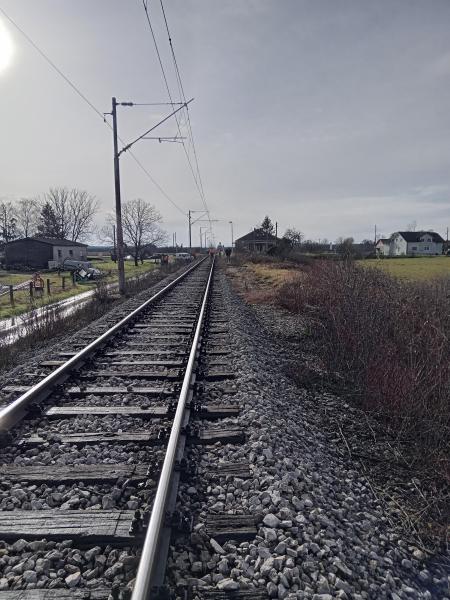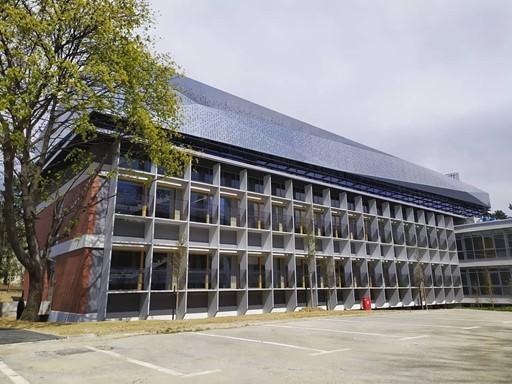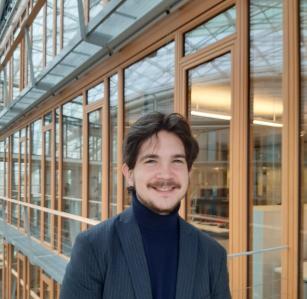Croatia built a new bridge, modernised railway lines and water systems, and brought lasers to its university with a European programme loan
If you look at the current map of Croatia, you’re immediately struck by its peculiar geography. Apart from its croissant shape, it also shares nine kilometres of its Adriatic Sea coastline with its neighbour Bosnia and Herzegovina.
This patch of land used to divide Croatia in two, separating the bulk of the country from Southern Dalmatia, which includes the Pelješac peninsula and one of the country’s main tourist destinations, the medieval city of Dubrovnik.
But the Pelješac bridge redraws the Adriatic coast. Opened in July last year, the 2.4 km bridge reaches out from the Croatian mainland to the Pelješac peninsula to unite divided Croatia’s coastline and bypass the narrow strip of territory belonging to Bosnia and Herzegovina.
Until now, residents and tourists had to cross an international border to get from Croatia’s northern mainland to Southern Dalmatia. This meant border checks, traffic delays, and the disruption of the flow of goods and people, especially at the peak of the tourist season.
With Croatia now part of the Schengen area, this new link brings an end to delays for commuters, reinforces the country’s territorial cohesion and greatly benefits tourism and trade.
A programme to change it all
The construction of the Pelješac bridge was supported by a structural programme loan from the European Investment Bank. The €600 million loan for co-financing schemes backed by EU structural funds was signed in two portions, the first in 2016 and the second in 2018. It was designed to speed up the absorption of EU grants and cohesion projects in Croatia and it was implemented by the Croatian Ministry of Regional Development and EU Funds.
The loan has helped finance a large array of projects of all sizes in Croatia in the fields of transport water and sanitation, environment, urban development, and social infrastructure, such as education and healthcare.
The European Investment Bank supports Croatia’s national contributions, in line with its cohesion guidelines and its partnership agreement with the Croatian government.
“We function as a catalyst and facilitator,” says Olga Pascenco, the European Investment Bank’s Loan Officer and country coordinator for Croatia. “Besides the attractive and flexible financing, the structural programme loan helped with the development of numerous investment projects across the country. It enabled the optimal absorption of EU funds, as most projects have been reviewed by JASPERS that supported over 100 projects in Croatia since 2011.”
On board to Zagreb
Today, the train ride from Karlovac to Zagreb takes about an hour. In a few years, it will take less than thirty minutes, thanks to the reconstruction of the railway line connecting the two cities.
HŽ Infrastruktura plans to modernise the existing 44 km rail section and the construction of a second track to Karlovac from Hrvatski Leskovac, about 10.7 km from Zagreb’s main station. The project will also renovate 10 stations and install new signalling and interlocking devices for improved traffic management capabilities.
The Hrvatski Leskovac – Karlovac route is one of the most important lines in Croatia. The M202 Zagreb main railway station – Rijeka connects the capital Zagreb with Croatia’s most important freight port in Rijeka. The European Investment Bank approved a €55 million loan for this project, under the structural programme loan in 2020.

When completed, the trains will run at a speed of 160 km/h except the area of Mavračići, Jastrebarsko and Karlovac, where it will be 140 km/h due to spatial constraints.
This reconstruction and modernisation will introduce higher-quality intercity and suburban passenger transport with faster journey times, improved reliability, comfort, and safety, and more services for passenger and rail freight transport. This will help facilitate the shift from road to rail.
Cleaner water across Croatia
Zlatar lies northwest of Croatia, just an hour away from Zagreb. Situated close to the Ivanščica peak, the region is mountainous and thinly populated. Although most homes are connected to a water supply, the infrastructure is run-down and outdated, increasing the risk of water pollution.
But this is a common problem in Croatia, with many cities suffering from dysfunctional water supply and sanitation infrastructure. That is why the European Investment Bank supported seven large water projects in Nin-Privlaka, Kaštela-Trogir, Split-Solin, Dubrovnik, Zabok-Zlatar, Velika Gorica, and Rijeka, with €95.5 million contribution to the total investment cost of almost one billion. Disbursed in 2022 under the programme loan, the financing focuses on the rehabilitation of public water supply and sewerage systems and the construction of tertiary-level wastewater treatment plants.
Thanks to these projects, the citizens of Zlatar, Zabok, and other Croatian cities will enjoy a regular supply of clean drinking water and reduced discharge of untreated wastewater to the Adriatic Sea, which are key to economic development, improved environmental and living standards.
- Read about how plants bred in France are resisting climate change, with less pesticide and fertilizer
Creating innovation and research in Croatia
How do you create a leading institute in experimental physics? According to the Centre for Advanced Laser Techniques, all you need is a big space, lots of researchers, and, just as importantly, lasers.
With the backing of the programme loan, the research centre was able to expand its physics laboratory at the University of Zagreb. It will also procure new equipment that will enable researchers to conduct physics experiments primarily using laser technology.

Laser will evolve in many directions in the future and have applications in many crucial sectors. With its large laser system, CALT is the only institution in Croatia that researchers can study laser-matter interactions
Thanks to its new laser technology and facilities, the centre will be able to collaborate with other elite universities across Europe and work on important innovations and research. The additional space will also allow the centre to accommodate as many as 10 more researchers and help train them to a high level of lab proficiency.
